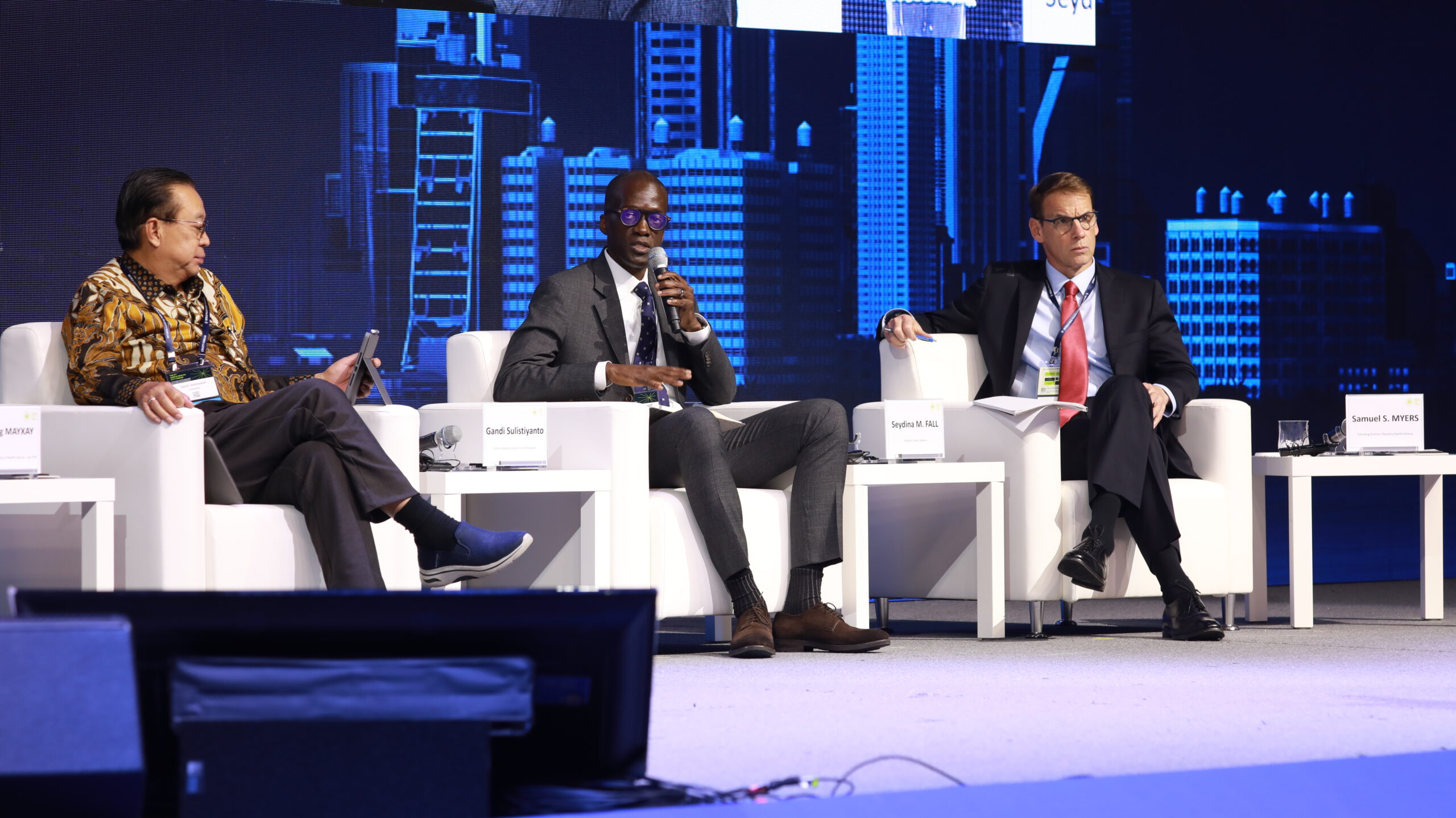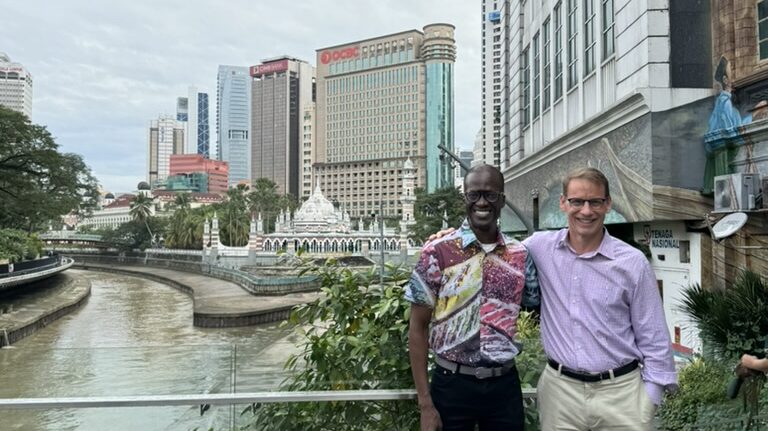
Seydina Fall’s Vision for Planetary Health Cities: A Global Perspective on Urban Revitalization
Seydina Fall is a senior lecturer in finance at Johns Hopkins Carey Business School and co-faculty director for the Johns Hopkins Institute for Planetary Health’s Innovation and Implementation program. In November 2024, Fall embarked on travels across Asia that deepened his understanding of an emerging global movement towards regenerative and equitable urban development—a vision he believes can reshape the future of cities worldwide. From Korea to Malaysia to Singapore, Fall witnessed the diverse yet increasingly aligned efforts to integrate health, sustainability, and community well-being into the design and redevelopment of urban spaces. At the heart of his journey is a concept he’s passionate about: Planetary Health Cities—places that not only nurture their inhabitants but also safeguard the planet’s natural systems and finite resources.
The World Health City Forum: A Global Convergence
One of the pivotal moments in Seydina Fall’s trip was attending the World Health City Forum in Incheon City, Republic of Korea. Centered on the theme of Urbanization and Planetary Health, the event brought together counterparts from Southeast Asia and beyond to discuss and share knowledge around the intricate connections between human well-being, built environments, and the broader health of the planet. As a panelist, Fall shared insights on the concept of Planetary Health Cities and its potential applications—exploring how technology and infrastructure can be used to not only optimize urban services (e.g., transportation systems, water and sanitation, and waste management) but also to improve the quality of life for residents and the quality of the natural systems on which residents depend.
A key takeaway for Fall was the shared commitment to integrate health into urban planning amid a diverse landscape of contexts, languages, and ideas. Cities like Kuala Lumpur and Singapore are tackling similar challenges of health care access, safe public spaces, urban waste, and air pollution, but under different names and through varied approaches. While the terminology may differ, the global dedication to creating healthier cities that protect the long-term well-being of both people and planet is unmistakable.
Revitalizing Cities in Malaysia: The Think City Initiative
In Malaysia, Seydina Fall had the opportunity to engage with individuals from Think City, an impact organization that focuses on revitalizing urban spaces, particularly in Kuala Lumpur and the Penang region. Think City’s approach is rooted in the principle of placemaking—a process that goes beyond just building structures. Placemaking aims to create environments where people can thrive, considering not only the built environment but also culture, socioeconomics, and the natural surroundings.
Fall was impressed by the inclusive and culture-based strategies being developed to bring people together. The ultimate goal, he noted, was clear: to make cities work for their people. Safeguarding the planet is paramount—without a healthy planet, there would be no cities to speak of.

Singapore: A Model of Livable Cities, but with Challenges
During his visit to Singapore, Seydina Fall met with individuals from the Centre for Livable Cities (CLC), a quasi-governmental organization dedicated to enhancing the city-state’s sustainability and livability. Although advanced in terms of placemaking and urban regeneration, Singapore faces restraints when it comes to available land. As the demand for space increases, the city-state must find ways to develop more without compromising nature or the safety and well-being of its residents.
The CLC is exploring regenerative building in construction—using sustainable materials, creating affordable housing (i.e., social housing), and ensuring that the city’s growth is both safe and environmentally responsible. The desire to build and expand is tempered by the understanding that there must be limits—something that resonates deeply with Fall’s philosophy for Planetary Health Cities.
The Path Forward: Building the Movement
Seydina Fall’s journey toward Planetary Health Cities is about planting the seeds and growing towards a thriving and equitable future for everyone. He believes that collaboration is key, emphasizing the need to bring together urban planners, architects, policymakers, and civil society to reimagine how cities should be built and how they can regenerate in the long term. One of the initiatives he currently leads is a working group at Johns Hopkins University, which includes faculty and staff from the John Hopkins Bloomberg School of Public Health, Johns Hopkins Medicine, Johns Hopkins Carey Business School, Office of the Provost, and the Bloomberg Center for Public Innovation. The group is developing a concept paper that outlines 10-15 principles for building cities through a Planetary Health lens.
This document will serve as a foundation for future work and collaborations, including a white paper to be shared at the Planetary Health Annual Meeting (PHAM) which will be held in Rotterdam, the Netherlands, from October 7 to 10, 2025. The hope is to establish a unified framework for urban development that can be applied globally.
A Personal Commitment to Planetary Health
Seydina Fall started his career in real estate, managing a variety of properties across the U.S. Throughout his career, he was driven by a desire to treat tenants fairly, providing safe, clean-living environments, and going above and beyond what the law requires. This focus on equity and environmental responsibility eventually led him to the concept of Planetary Health—a field and social movement that underscores the connections between human health and well-being with the state of Earth’s natural systems and calls for a comprehensive shift in how humans interact with each other and Nature.
“There should be limits to how much we can build, how much we should build, and how we should build” Fall reflects. “The planet is our natural capital, and it has limits.” This understanding forms the basis of his work and his push for a new approach to urban planning—one that rethinks the building materials we use, the resources we consume, and the ways we design our cities to ensure they become thriving places for their inhabitants and do not exploit the environment. The goal is to prioritize the adaptive reuse and repurposing of existing buildings instead of demolishing and replacing them. Furthermore, this reuse should be done through a circular or “cradle-to-cradle” approach, minimizing use of additional energy and maximizing use of existing materials, ultimately benefiting the planet in the long term.
Conclusion: A New Era of Urban Development
Across his travels, a common theme emerged: cities everywhere are grappling with similar challenges but often under different terminology. Seydina Fall’s goal is to unite these efforts under the banner of Planetary Health Cities, which encompasses principles like placemaking, regenerative design, walkable cities, and urban solutions that prioritize human health alongside environmental well-being.
By working toward common goals across sectors and borders, we can create cities that are not only livable but also protect the health of our planet for generations to come.

